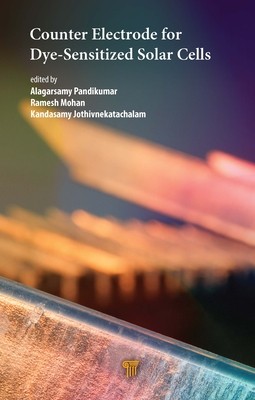
- We will send in 10–14 business days.
- Author: Alagarsamy Pandikumar
- Publisher: Jenny Stanford Publishing
- ISBN-10: 9814877387
- ISBN-13: 9789814877381
- Format: 15.2 x 23.1 x 2 cm, hardcover
- Language: English
- SAVE -10% with code: EXTRA
Counter Electrode for Dye‐sensitized Solar Cells (e-book) (used book) | bookbook.eu
Reviews
Description
Renewable energies have become an attractive option to overcome the energy demands in sustainable and affordable ways. It has been estimated that one-third of the total renewable energies would be generated from photovoltaics (PVs). A solar or PV cell is a device that directly converts sunlight into electricity by taking benefit of the photoelectric effect. In the third-generation solar PVs, dye-sensitized solar cells (DSSCs) are believed to be the most promising and have attracted wide attention. The optimization of a DSSC is focused on four main components: (i) metal oxide semiconductor, (ii) photosensitizer, (iii) redox couple electrolyte, and (iv) counter electrode. Among these, the counter electrode undertakes three functions: (i) as a catalyst, (ii) as a positive electrode of primary cells, and (iii) as a mirror. To obey these functions, the electrode material should have high catalytic activity, high conductivity, high reflectivity, high surface area, and electrochemical and mechanical stability. To improve the performance of DSSCs, many scientists have developed new counter electrodes made of platinum, carbon materials, transition metals, conductive polymers, and composites. This book converses the various aspects of materials for the fabrication of counter electrodes especially for the DSSCs.
EXTRA 10 % discount with code: EXTRA
The promotion ends in 18d.11:02:27
The discount code is valid when purchasing from 10 €. Discounts do not stack.
- Author: Alagarsamy Pandikumar
- Publisher: Jenny Stanford Publishing
- ISBN-10: 9814877387
- ISBN-13: 9789814877381
- Format: 15.2 x 23.1 x 2 cm, hardcover
- Language: English English
Renewable energies have become an attractive option to overcome the energy demands in sustainable and affordable ways. It has been estimated that one-third of the total renewable energies would be generated from photovoltaics (PVs). A solar or PV cell is a device that directly converts sunlight into electricity by taking benefit of the photoelectric effect. In the third-generation solar PVs, dye-sensitized solar cells (DSSCs) are believed to be the most promising and have attracted wide attention. The optimization of a DSSC is focused on four main components: (i) metal oxide semiconductor, (ii) photosensitizer, (iii) redox couple electrolyte, and (iv) counter electrode. Among these, the counter electrode undertakes three functions: (i) as a catalyst, (ii) as a positive electrode of primary cells, and (iii) as a mirror. To obey these functions, the electrode material should have high catalytic activity, high conductivity, high reflectivity, high surface area, and electrochemical and mechanical stability. To improve the performance of DSSCs, many scientists have developed new counter electrodes made of platinum, carbon materials, transition metals, conductive polymers, and composites. This book converses the various aspects of materials for the fabrication of counter electrodes especially for the DSSCs.


Reviews